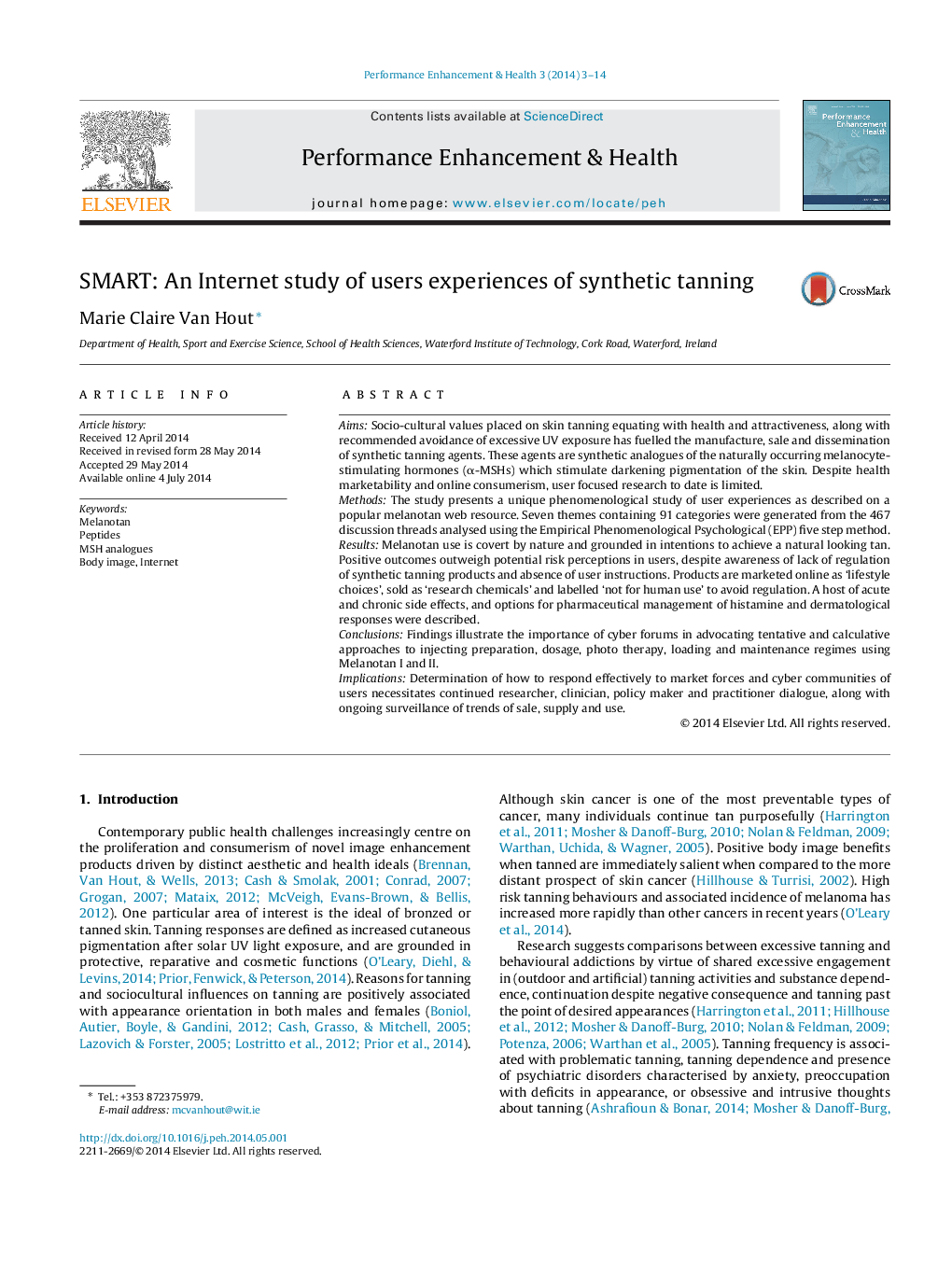| Article ID | Journal | Published Year | Pages | File Type |
|---|---|---|---|---|
| 889529 | Performance Enhancement & Health | 2014 | 12 Pages |
•Melanotan products are not regulated and sold without instructions.•Internet forums advocate informed and calculative approaches to synthetic tanning.•Positive outcomes outweigh user perceptions of risk.•Acute and chronic side effects of Melanotan I and II are managed by pharmaceuticals.•Continued surveillance of use and clinical research is warranted.
AimsSocio-cultural values placed on skin tanning equating with health and attractiveness, along with recommended avoidance of excessive UV exposure has fuelled the manufacture, sale and dissemination of synthetic tanning agents. These agents are synthetic analogues of the naturally occurring melanocyte-stimulating hormones (α-MSHs) which stimulate darkening pigmentation of the skin. Despite health marketability and online consumerism, user focused research to date is limited.MethodsThe study presents a unique phenomenological study of user experiences as described on a popular melanotan web resource. Seven themes containing 91 categories were generated from the 467 discussion threads analysed using the Empirical Phenomenological Psychological (EPP) five step method.ResultsMelanotan use is covert by nature and grounded in intentions to achieve a natural looking tan. Positive outcomes outweigh potential risk perceptions in users, despite awareness of lack of regulation of synthetic tanning products and absence of user instructions. Products are marketed online as ‘lifestyle choices’, sold as ‘research chemicals’ and labelled ‘not for human use’ to avoid regulation. A host of acute and chronic side effects, and options for pharmaceutical management of histamine and dermatological responses were described.ConclusionsFindings illustrate the importance of cyber forums in advocating tentative and calculative approaches to injecting preparation, dosage, photo therapy, loading and maintenance regimes using Melanotan I and II.ImplicationsDetermination of how to respond effectively to market forces and cyber communities of users necessitates continued researcher, clinician, policy maker and practitioner dialogue, along with ongoing surveillance of trends of sale, supply and use.
